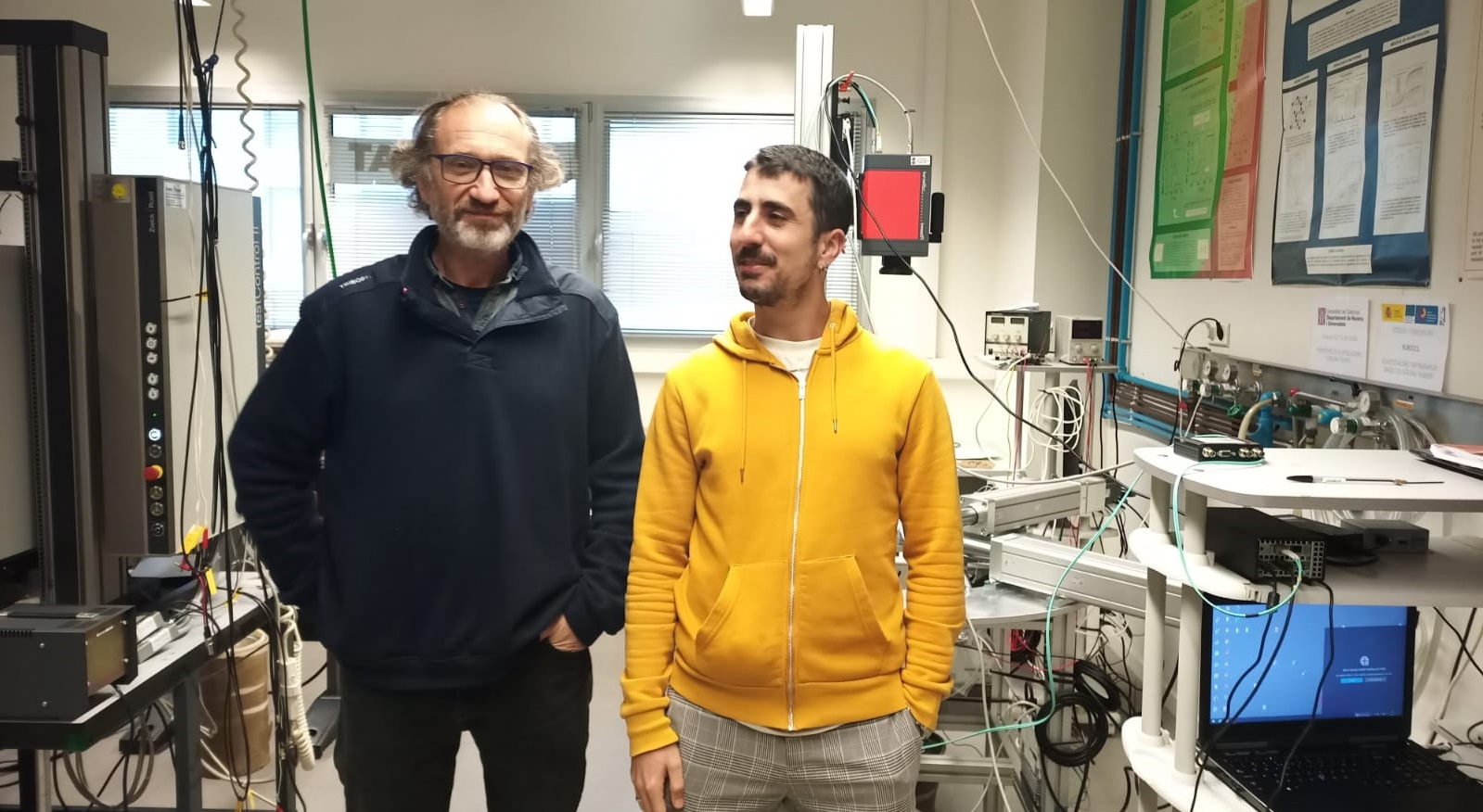
The UB develops an innovative cooling and heating technology based on more efficient rubber and without greenhouse gases
Global warming demands an advance in cooling and heating technologies, which are responsible for a significant part of the emission of greenhouse gases. Researchers at the University of Barcelona (UB) have developed an innovative cooling and heating technology based on natural rubber refrigerants that do not emit these types of polluting substances. The project has received a Product grant of 149,901 euros, under the Knowledge Industry program of the Generalitat de Catalunya, with the aim of achieving a prototype of the technology.
The research is led by Dr. Eduard Vives, professor of the Department of Condensed Matter Physics of the Faculty of Physics of the UB, and will be carried out jointly with Dr. Enric Stern, who is the enterprising scientist.
Rubber is a material with excellent elastocaloric properties, meaning that it can absorb and release heat when it is mechanically stretched. In this way, it presents a great overheating when it stretches and a great cooling when it shrinks. This effect is due to the ability of some elastomers to crystallize when subjected to tension.
These characteristics are the basis of this UB technology, which was started with a Llavor grant, from the Generalitat program itself. During this previous project, it was also discovered that these cooling effects are significantly amplified under torsion rather than uniaxial tension, giving rise to the so-called twistocaloric effect.
The new prototype will be an updated version of a previous elastocaloric device based on rubber, developed by the UB team with the previous grant, and which was validated in a laboratory environment. The new device will therefore incorporate the twisting of refrigerants and combine uniaxial stretching and twisting to maximize cooling power. It will also continue to exploit the main innovations of this technology to increase efficiency and minimize energy consumption by also incorporating energy recovery principles. In this sense, the device will recycle the energy consumed by incorporating two refrigerants in asynchronous cycles that will stretch and twist each other.
In addition, it should be noted that one of the advantages of rubber, with respect to other alternatives with cooling properties based on electrocaloric or magnetocaloric effects, is that it is easier to apply a mechanical force than to apply an electric or magnetic field to obtain the same cooling. On the other hand, rubber is a material that can be produced in any geometry, so it can be modified to improve its mechanics and thermal properties.
The ultimate goal of the project, numbered 2023 PROD 00071, is to build a compact autonomous prototype that will be presented to leading companies in the refrigeration and rubber industry, with the aim of licensing the new technology.

